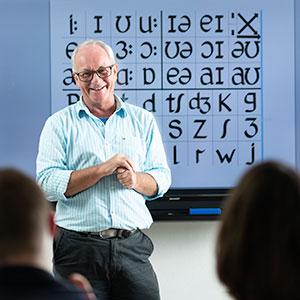20th July 2020
We’re always encouraging our learners to listen for a purpose. But, how often is it that we focus on our own listening skills as teachers rather than maintaining that ‘instructional teacher mode’ and ‘tune in to the language and errors?’ Nothing’s wrong with identifying errors; it’s an essential part of our role as TESOL teachers, either in the physical classroom or the online classroom. But do we listen in the right way?
According to Jim Scrivener, there are three different ways that teachers listen; he describes them as ‘analytical listening, supportive listening and conversational listening’ and describes these in his book Classroom Management Techniques and summarised in the table below:
| Way of Listening | Features |
| Analytical | • Most likely when we start out as teachers • Common in the classroom • Facilitates feedback/error correction |
| Supportive | • Developed when becoming more experienced • Pay attention to the learner’s message • Not so focused on language and errors |
| Conversational | • Varied degrees of attention applied • Possibilities for ‘hijacking’ and ‘stealing’ a conversation • Often inappropriate for the classroom |
As teachers, how do we develop these different ways of listening for effective use in the classroom and other leaning environments? Here are a couple of ideas, firstly dealing with analytical listening.
When we listen analytically, we’re typically identifying errors and providing feedback on these. In a day to day conversation, we’re not likely to be listening analytically. We might in day to day conversation pay varying degrees of attention and get distracted. By listening analytically, we tend to focus on accuracy of language and identify errors. I found the following from Jim Scrivener’s Classroom Management Techniques a useful guide to developing analytical and supportive listening as a teacher.
Assess the acceptability of the learner’s speech:
Is the expression acceptable or not? This will depend on the aims of your lesson, the learner’s level and if possible identify why the learner said what they did; was it an error or a mistake? If the lesson is accuracy focused, then I need to correct but if its fluency focused, then the errors might not receive attention.
If we decide that the error(s) need to be addressed then we proceed to the next stage.
Analysing the errors:
You’ve begun to break down the language as transmitted to you from the learner and we make a comparison to what we believe to be the correct version. There might be more than one discrepancy from the correct version and we might need to identify which of these are the most important to the learner or the class as a whole (particularly if there is a general error). Is it something the learners are familiar with or something they’ve taken a guess on?
What feedback do I give?
We’ve narrowed down the errors as we can’t deal with all of them, because of time constraints, learners’ ability to effectively process these and not to overwhelm them and demotivate them. Do we give feedback to an individual learner on the spot or delay feedback for the whole class. Our decision will change from day to day and depend on many variables, but I think we can get the idea.
Now, we’re going to move on to approaches to develop ‘supportive listening’:
In order to listen supportively we need to:
Pay attention to what the learner has to say:
Don’t be distracted and don’t listen in the way we would normally, whether we’re interested or not. It needs us to give our full attention to what the learner is saying. Jim Scrivener suggests this is where the ‘pay’ in ‘pay attention’ comes in; there is a cost to supportive listening – the demand on our energy.
Be aware of how you are listening:
Something we can do in class for our professional development is monitor how we are listening and adapt as necessary. In-class development is thought to have more impact and more sustainable when compared to workshops (Guskey 2002, Al Qasimi 2017, Ali Raza 2010); so please, give it a go. Think of the levels of attention we might give in any ordinary situation; it will probably range from zero, when we have been distracted, to giving our full attention and everything in between. So imagine this as a continuum that we can place ourselves on at any point in time.
- Identify points in a lesson when we need to listen supportively
- At those points we should ask ourselves where we are on the continuum
- Try to move along the continuum and place our full attention on what the other person is saying
- Follow these points regularly and it should become automatic
Having raised our awareness of the potential to develop our own listening skills, we need to put it into practice. The best place to do this is in the classroom, either physical or online, not just because there’s research to say in-class development has more impact, but the benefit to us as teachers and the positive impact on the learners experience with real possibilities for learning enhancement.
References:
l Qasimi Foundation, 2017. How to Run Sustainable Teacher Professional Development Programs
Thomas Guskey, 2002 Professional development and teacher change
Naziha Ali Raza, 2010. The Impact of EFL PD in UAE
Jim Scrivener, 2012, Classroom Management Techniques
Considering a Trinity CertTESOL qualification? The introductory module of the CertTESOL course is now available as a standalone fully online course – the TESOL Starter course.



